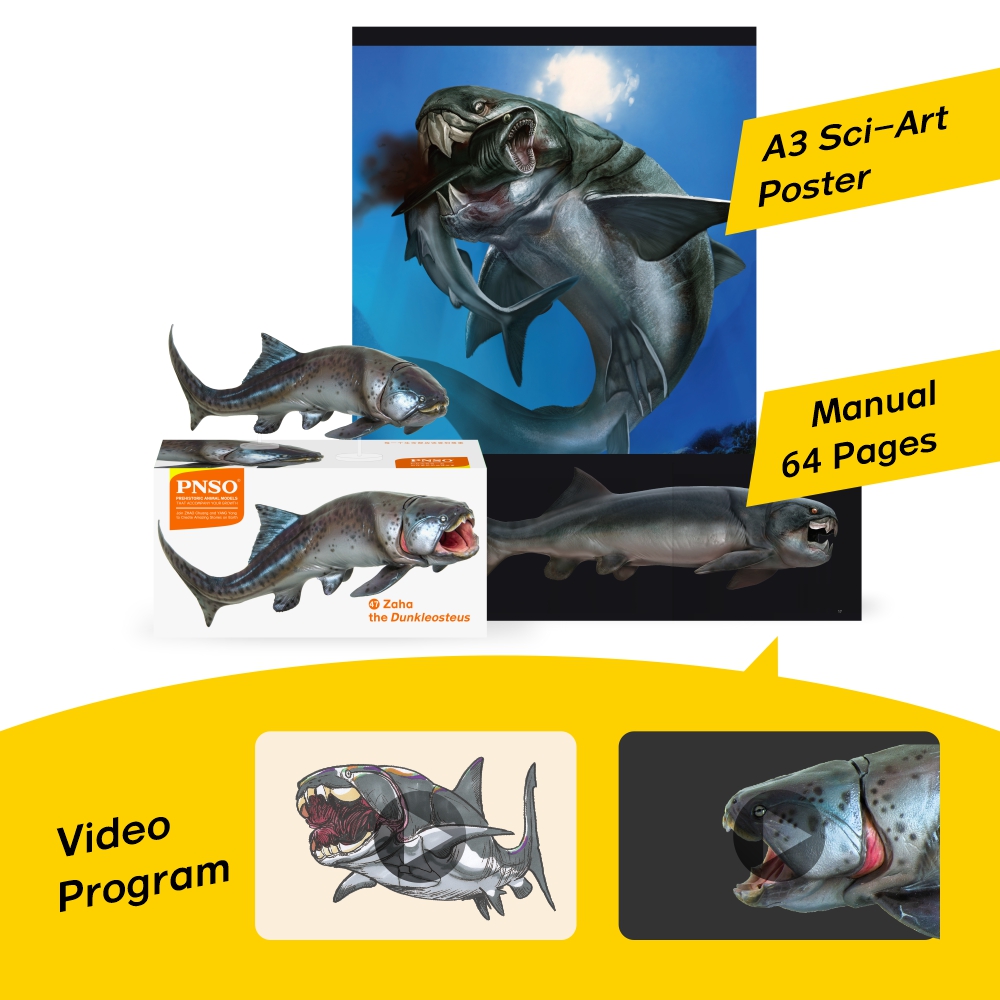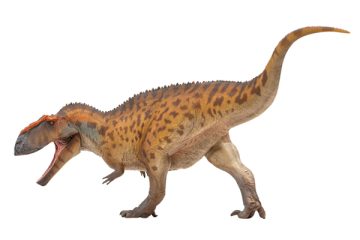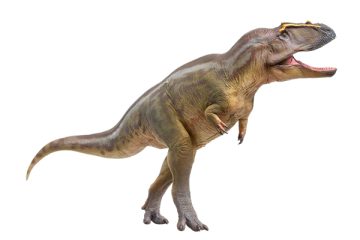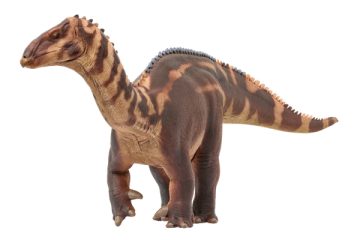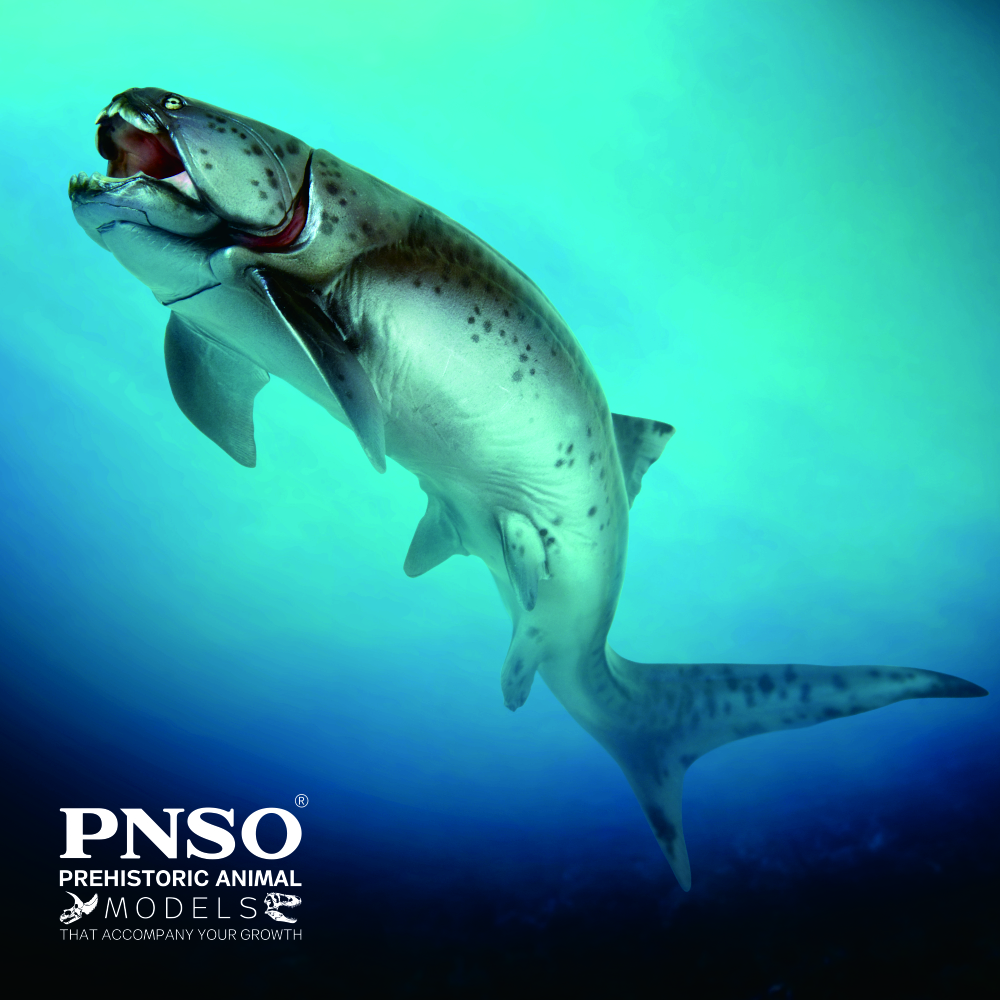
Stories written by: YANG Yang
Who is Zaha the Dunkleosteus?
Zaha the Dunkleosteus, which lived in the Devonian Period, is from the placoderm family. Its body structure benefited it significantly in predation, and it could prey on almost all the prey it liked. Even in the Dunkleosteus family, Zaha was one of the best. The ocean of 380 million years ago was not only the era of fish but also belonged to Zaha the Dunkleosteus.
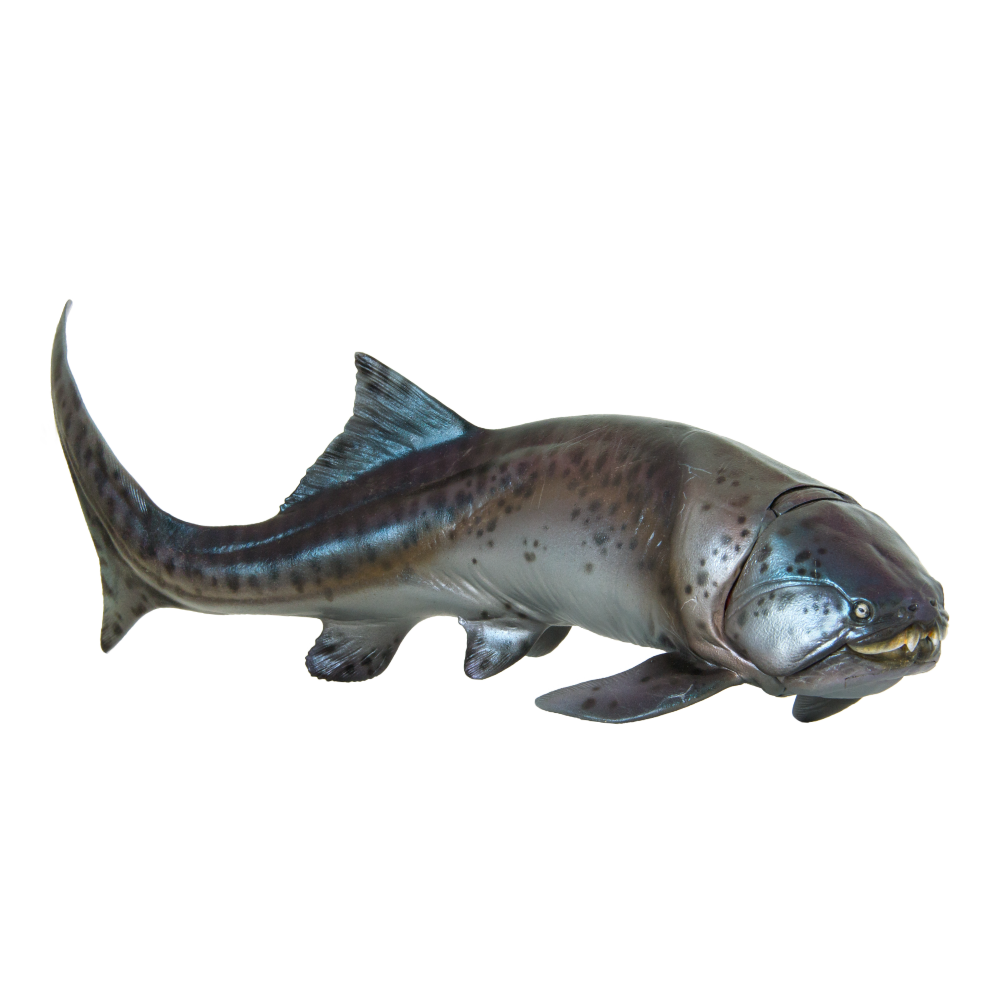
Model Size/23cm X 7.5cm X 7.5cm
Model Material/ Environment-friendly PVC, hand painting
Model Structure/Solid Structure
Package Size/24.6cm X 8.7cm X 12.6cm
Inside Package/ Model + A3 Poster + Product Manual
Transparent Support/No
How did ZHAO Chuang and YANG Yang create Zaha the Dunkleosteus?
The Size of Zaha the Dunkleosteus
Dunkleosteus was once considered a giant fish, with a body length of up to 10 meters, but recent studies have shown that this figure was a bit overestimated. Their body length was about 6 meters, and some may reach 8 meters. Of course, even the shrunken number was invincible in the ocean at that time. When we restored Zaha the Dunkleosteus, we set its body lenght to 8 meters to scale down.
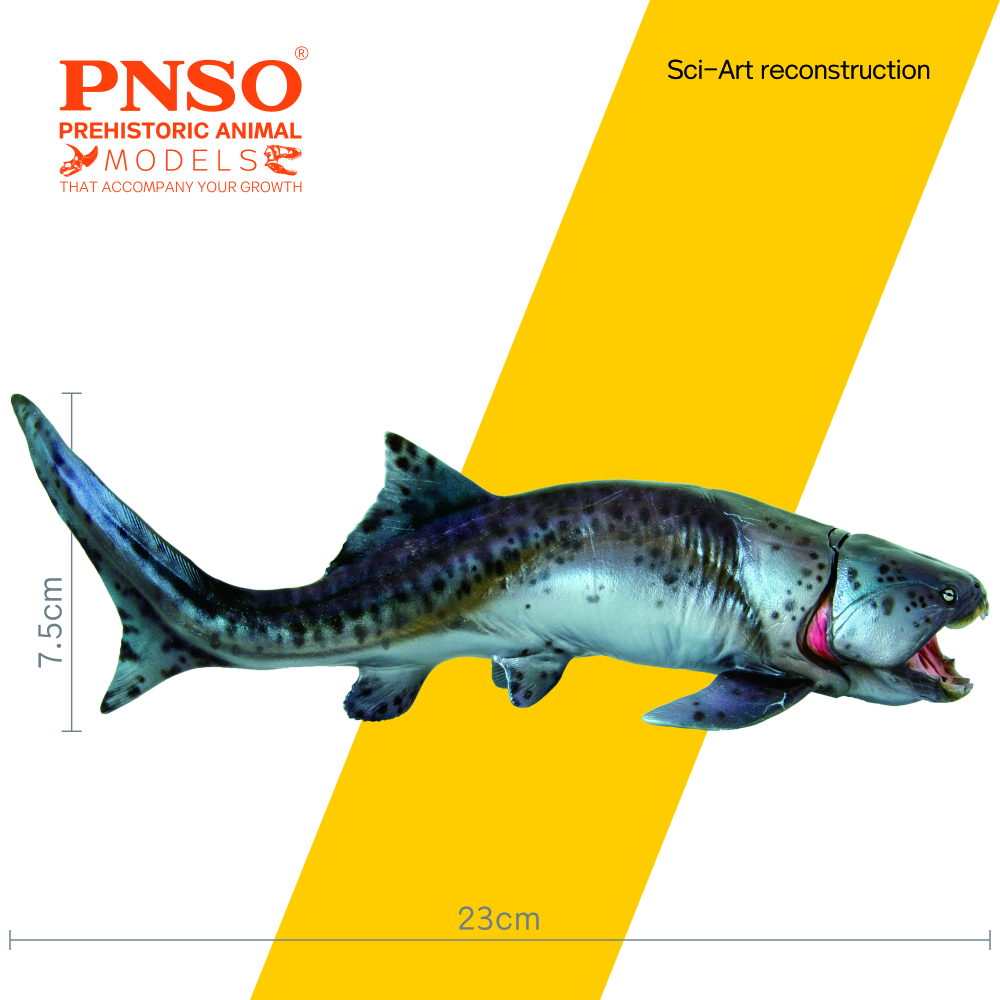
The Head of Zaha the Dunkleosteus
Placoderms had a thickly armored head, and Dunkleosteus was no exception. In the restoration of Zaha the Dunkleosteus, its huge head and the armored exterior are shown obviously.

The Huge Mouth of Zaha the Dunkleosteus
The mouth of Dunkleosteus is the focus of this restoration. Usually, we all know that Dunkleosteus had a large, fierce-looking mouth, but we don’t care much about why its mouth could be opened so wide. In this restoration, we highlight the four flexible articulations in its mouth, which are the key to opening its mouth in such a wide range.
The Teeth of Zaha the Dunkleosteus
Dunkleosteus could easily tear their prey, but the tools they used were not teeth. In fact, Dunkleosteus had no teeth. The tooth-like structure was the sharp edges of armored plates wrapped around its head. In the restoration of Zaha the Dunkleosteus, we can see this structure very clearly.
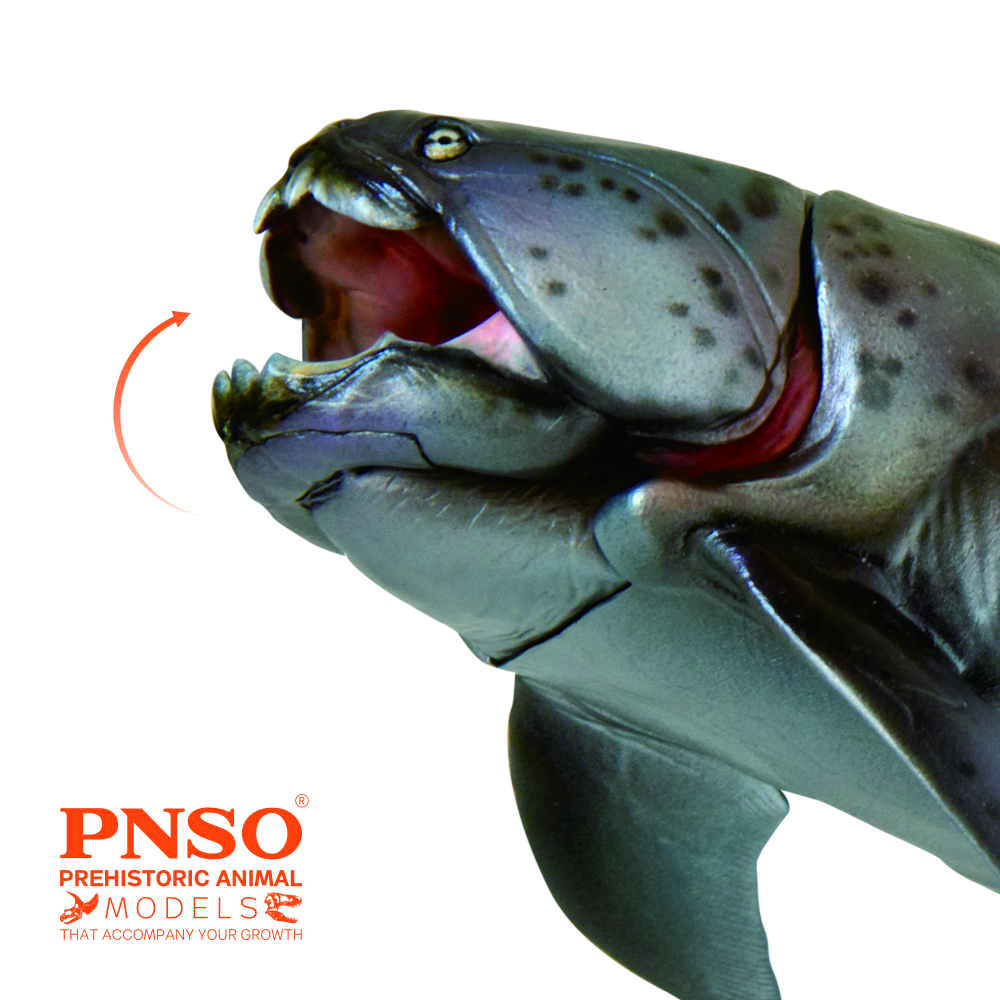
The Shark-like Body Figure of Zaha the Dunkleosteus
In many restorations, Dunkleosteus is described with a round and low dorsal fin and pectoral and pelvic fins on the bottom of the body. But in fact, the body of Dunkleosteus looked very much like a shark. Its dorsal fin was pointed and tall, the underside of its body possessed pectoral, dorsal, and anal fins and its caudal fin was also crescent-shaped like that of sharks. These latest theories are all shown in Zaha the Dunkleosteus.
The Color of Zaha the Dunkleosteus
The body color of most extinct animals comes from speculation and is the imagination of artists. However, the fossils of Dunkleosteus preserved evidence for its color, which allows us to restore Zaha closer to the real Dunkleosteus. The dorsal color of Zaha the Dunkleosteus appears darker, while the belly is silvery white.
Learn while Play
Subscribe to PNSO.Official YouTube channel. Get to know Zaha the Dunkleosteus with ZHAO Chuang in the playlist of PNSO Prehistoric Animal Models-Get to Know Marine Animals. Learn to draw Zaha the Dunkleosteus with ZHAO Chuang in the playlist of PNSO Prehistoric Animal Models-Learn to Draw Marine Animals.
